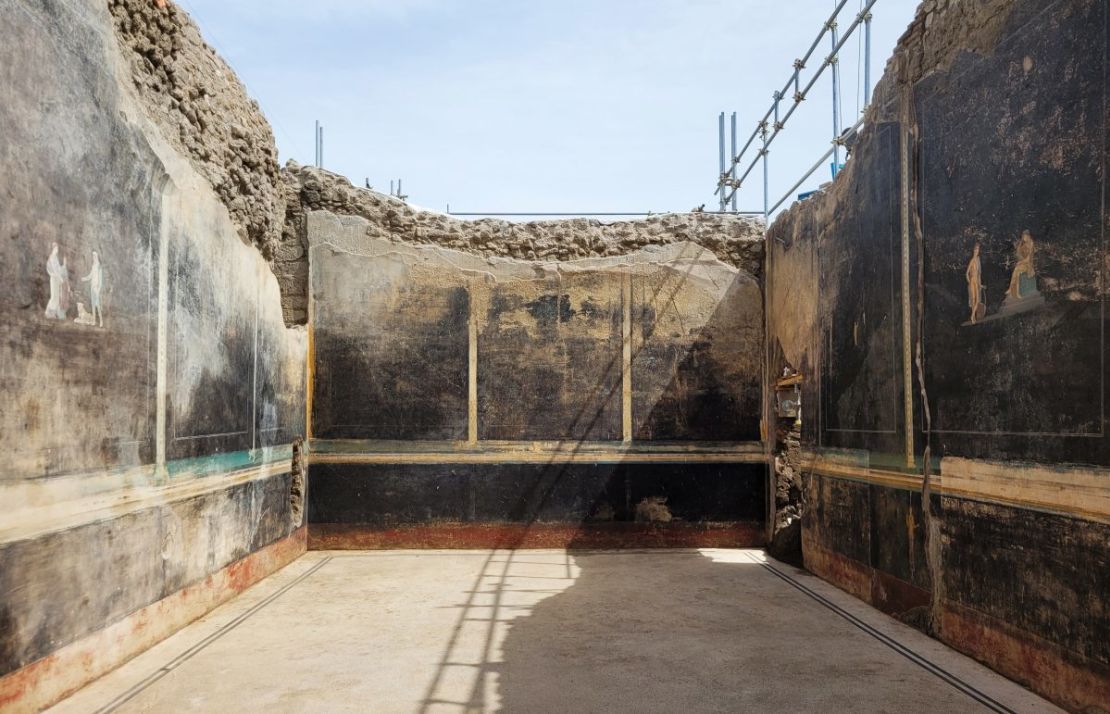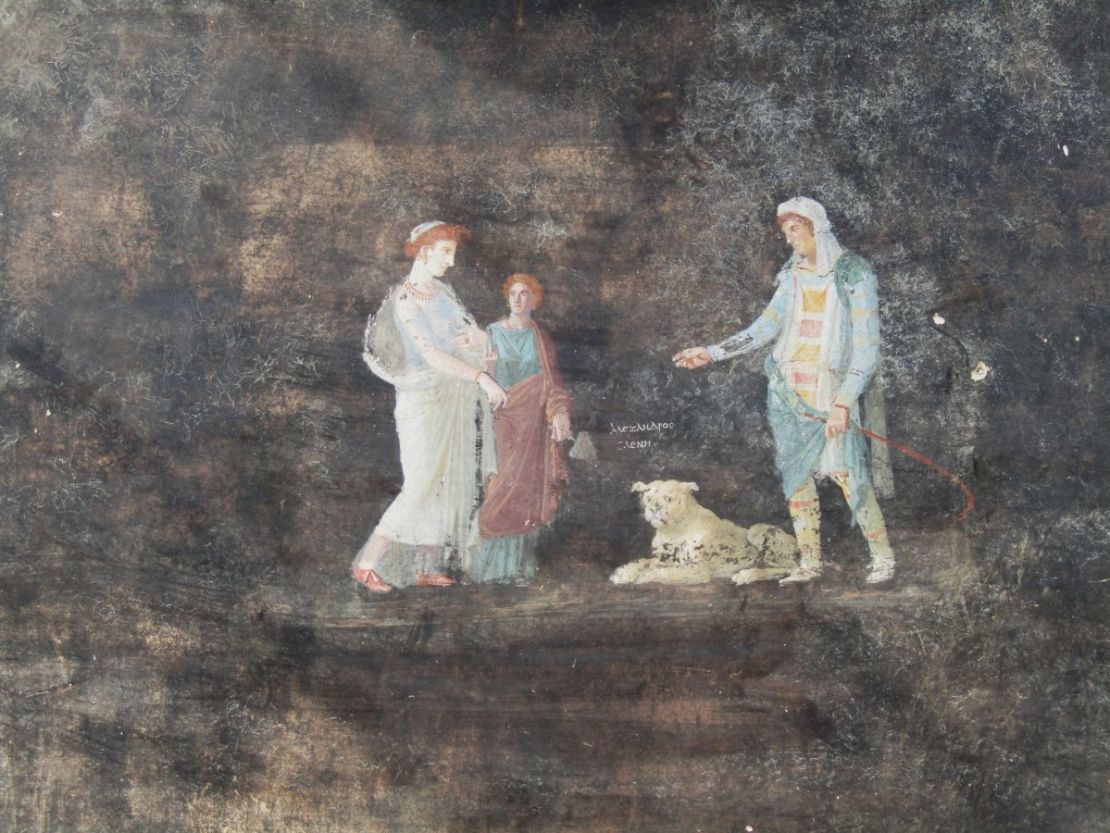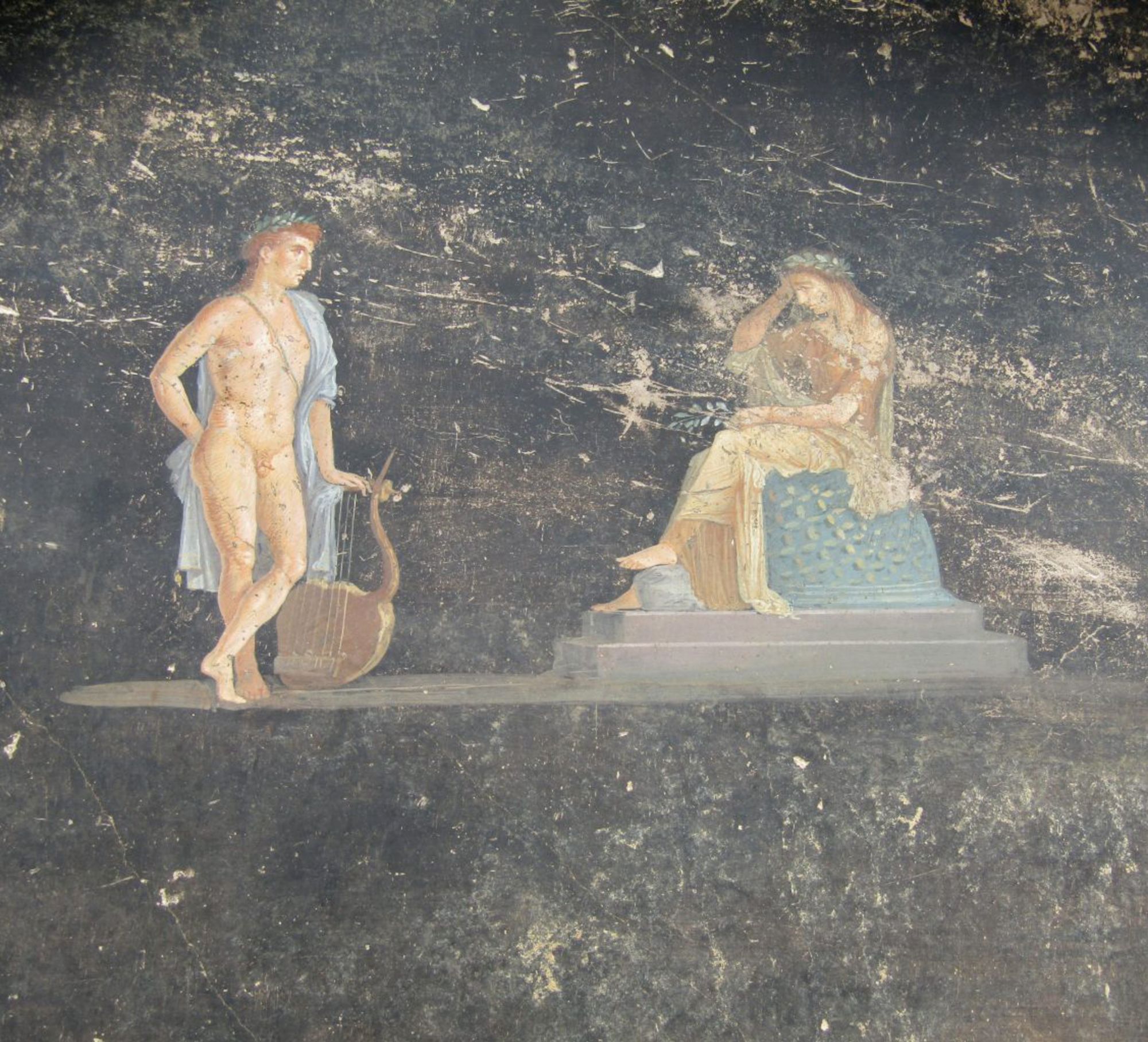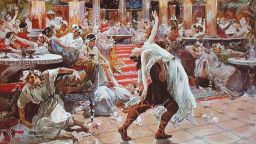Ancient Romans were enjoying more than just the food during their feasts, a new discovery at the archaeological site of Pompeii has shown.
Archaeologists working at the world-famous site have uncovered a banqueting hall with black-painted walls covered with frescoes of mythological characters associated with the Trojan War.
The ornately decorated room provided an elegant setting for entertainment or conversation during banquets, the Archaeological Park of Pompeii, which oversees the site, said.

“The walls were painted black to prevent the smoke from the oil lamps being seen on the walls,” Gabriel Zuchtriegel, director of the archaeological park, said in a news release Thursday.
“People would meet to dine after sunset; the flickering light of the lamps had the effect of making the images appear to move, especially after a few glasses of good Campanian wine,” he continued.
One of the frescoes depicts a meeting between Helen and Paris, son of the Trojan king, Priam, identified by a Greek inscription of his other name, “Alexandros.” In Greek mythology, Paris’ abduction of Helen from her Greek husband, Menelaus, led to the Trojan War.

Another shows a downcast Cassandra, daughter of Priam, with the god Apollo.
As legend has it, Apollo promised Cassandra the gift of prophecy but, as she did not yield to his desires, punished her by also ordaining that her prophecies would never be believed. Her warning of the fall of Troy, for example, went unheeded.
The newly revealed dining room is about 15 meters long (49 feet) and six meters wide (20 feet) and opens onto a courtyard with a long staircase leading to the second floor, according to the release.
On the fresh plaster of the arches of the staircase, someone had used charcoal to draw two pairs of gladiators and what seems to be a huge, stylized phallus.
Beneath the arches, a large pile of building materials was found.
The ancient Greco-Roman city of Pompeii was buried under ash and volcanic glass during the eruption of Mount Vesuvius in 79 C.E. and since the 1700s, archeologists have been unearthing the city that’s been frozen in time.
The site contains 1,070 homes with more than 13,000 rooms, as well as public and sacred spaces, according to the archeological park. This latest discovery was made during a large, ongoing excavation.
Other finds revealed in the excavation area so far include two interconnected houses, a bakery, a laundry room and a beautifully frescoed living room.

